Toyota Verso Review 2024
Written by Andrew Brady
Quick overview
Pros
- Excellent Toyota build quality
- Easy to live with
- Seven-seat practicality
Cons
- Totally devoid of flair and imagination
- Cramped third row
- Small boot in seven-seat mode
Overall verdict on the Toyota Verso
"The seven-seat MPV is looking increasingly like a square peg in a round hole, with image-conscious family buyers flocking to seven-seat SUVs instead. The Toyota Verso is the kind of car that sparked the mass migration. It’s devoid of flair, imagination, verve or excitement. Still, there’s a lot to be said for common sense and practicality."
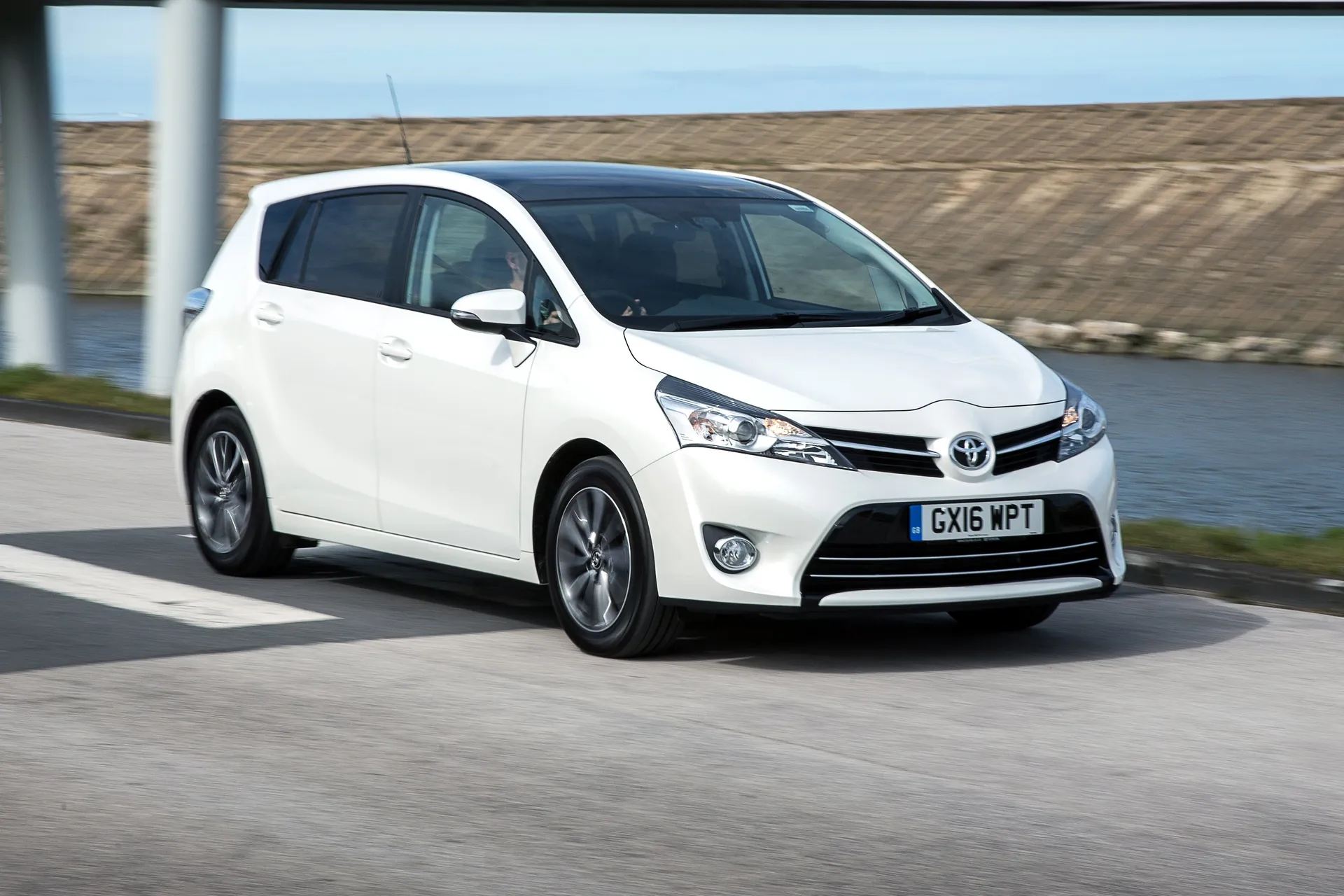
The Toyota Verso: gone and all but forgotten. You may have passed a couple of Verso MPVs on your way home from work this evening, but the chances are you didn’t notice them. This feels like a car engineered to blend in – to deliver years of loyal service without fuss or drama.
As you'll read in our Toyota Verso review, you're not buying into a world of glamour and excitement. Instead, you’re throwing your money down on a car that will serve a purpose. Given Toyota’s reputation for reliability, it’s unlikely to break the bank.
Launched in 2013 as a heavily reworked version of the old Verso dating back to 2009, Toyota went to great lengths to build a car tailored to European tastes. Indeed, it was designed and engineered in Belgium and France, while production took place in Turkey.
As a result, it feels totally at home on European roads, combining excellent ride comfort with surprisingly good dynamics. It’s not a car for thrillseekers, but it’s not totally devoid of fun. OK, maybe not ‘fun’, but it is a satisfying car to drive.
Excellent economy comes courtesy of a BMW-sourced 1.6-litre diesel engine, with a pair of petrol engines also available. Each was selected for efficiency rather than enjoyment, but they do an adequate job of powering this seven-seat MPV.
There’s actually a five-seat Verso at the bottom of the range ladder, but few people bought it. This means the overwhelming majority of cars left the factory with Toyota’s clever ‘Easy Flat’ folding rear seat system. Put simply, you get five individual rear seats, which provide 32 different seating permutations.
With all seven seats in place, the boot space would be best described as ‘bijou’, but the Verso is more of a ‘des res’ with the third row folded down. Then fold away the second row and the Verso is more van than MPV.
There are more storage compartments than you can shake a kebab stick at, with a generous level of equipment on all except the entry-level model. You also get the reassurance of knowing that the Verso achieved a five-star safety rating – it was named the safest MPV when new by Euro NCAP.
What are the drawbacks? The styling is a little unadventurous, the cabin is as exciting as reading a privacy policy and the engines have to be worked really hard to make real progress. Your reward is a coarse engine note and a dent in the fuel economy. The best advice: take things steady.
Because the Toyota Verso was discontinued in 2018, there are some real bargains to be found on the used market. Another factor working in your favour is that many buyers are turning to the perceived benefits of seven-seat SUVs. That’s reducing demand for practical MPVs like the Verso.
If you’re in the market for a good value, reliable and practical people carrier, the Toyota Verso is one of the best of the breed.
Looking for a used car for sale? We've got 100s of Toyota Approved Used Cars for Sale for you to choose from, including a wide range of Toyota Verso cars for sale.
Is the Toyota Verso right for you?
The Toyota Verso isn’t the kind of car you lie awake at night thinking about. You buy a car like this at a particular stage in your life, when Happy Meals are more important than Happy Hours, Saturday mornings are spent at the soft play area rather than shaking off a heavy one, and you seriously consider a subscription to What Pushchair? magazine.
If you’re at that stage of life, the Toyota Yaris ticks a lot of boxes. When everything around you seems unpredictable and random, the Verso delivers a feeling of dependability and reassurance. No matter what you and your kids throw at it, the Toyota Verso will keep on delivering, time and time again.
It’s almost completely devoid of excitement and flair, but we’re sure you’re getting enough of a buzz from spending an hour a week watching your children at the trampoline centre. Ear plugs are recommended.
What other cars are similar to the Toyota Verso?
The Toyota Verso is the Ronseal of the seven-seat MPV world – it does exactly what it sets out to do. In this respect, it’s very similar to the Volkswagen Touran and Ford C-MAX.
If you’re after a dollop of driving pleasure, the larger Ford S-MAX should float your Iggle Piggle boat, while the Citroen Grand C4 Picasso (now known as the Grand C4 SpaceTourer) adds some French flair to the mix.
Speaking of French flair, the Renault Grand Scenic rides on massive 20-inch alloy wheels, which will impress a couple of people on the school run.
Comfort and design: Toyota Verso interior
"On the plus side, all versions are soft and quiet, regardless of speed. This is an extremely comfortable car to drive and be ferried about in. Cries of “Are we nearly there yet?” will be a thing of the past. Probably."
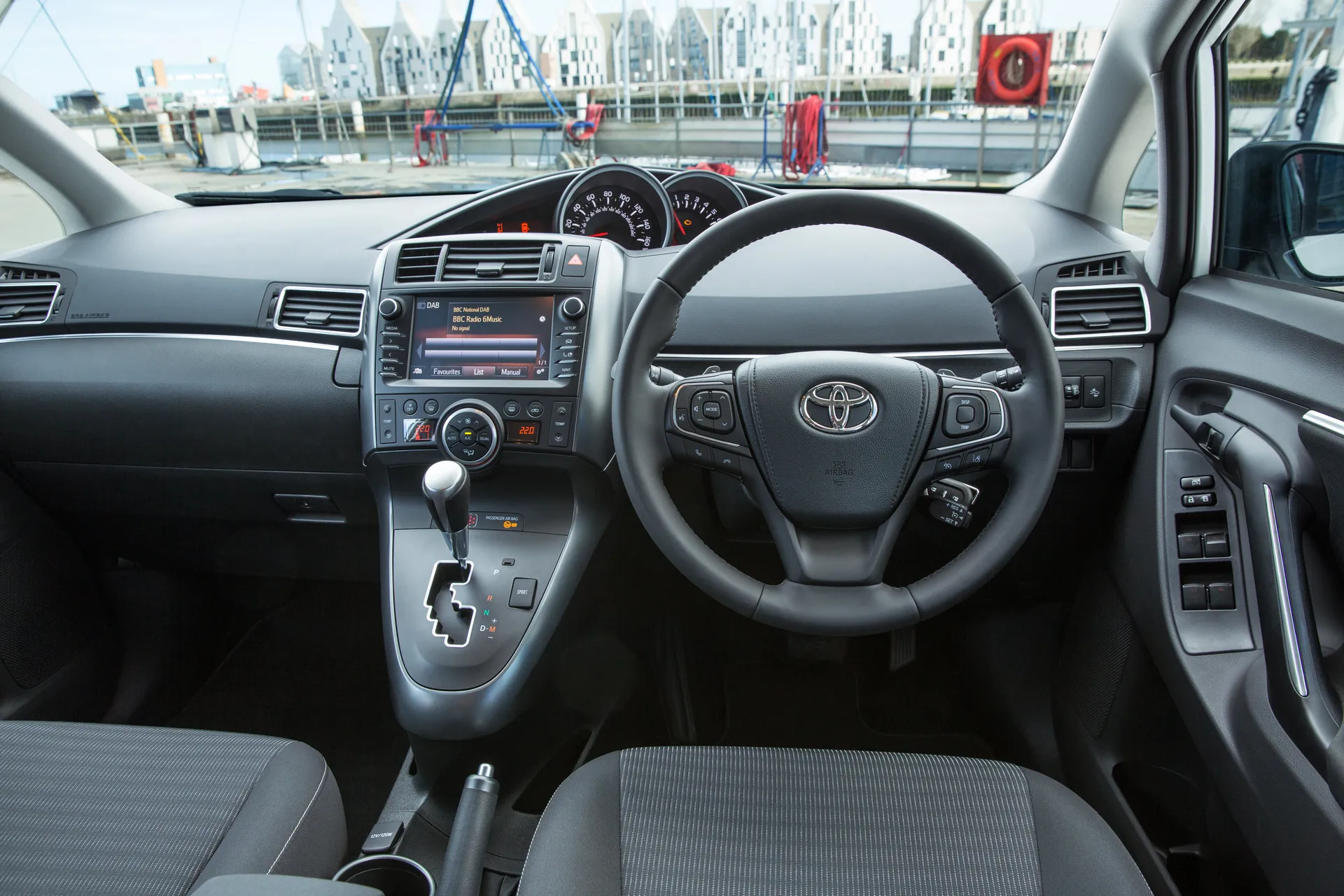
Dull and instantly forgettable. No, not a suggested Tinder profile, but our description of the Toyota Verso’s exterior styling. It’s so insipid, we wouldn’t be surprised to discover that Dulux has named a magnolia paint in its honour. Two tins of Verso Magnolia, please.
It’s a similar story on the inside, with the designers going to great lengths to ensure that no heartbeats shall be raised as a result of encountering the cabin. Toyota’s Fifty Shades of Grey is a little different to the E.L. James novel. Allegedly.
But let’s release the belt to cut the Toyota Verso some slack. The centrally mounted dials might look a little dated, but they’re clear and easy to read. Meanwhile, the gearstick is mounted high on the centre console, making changing ratios less of a chore.
Early examples of the Active trim are best avoided, as the absence of ‘luxuries’ like a leather steering wheel, leather gear knob, cruise control and Bluetooth give the feel of a rental car. We suspect your mates will think you have become an Uber driver.
On the plus side, all versions are soft and quiet, regardless of speed. This is an extremely comfortable car to drive and be ferried about in. Cries of “Are we nearly there yet?” will be a thing of the past. Probably.
Quality and finish
There’s a big difference between perceived and actual quality. Some manufacturers – hello Germany – do a remarkably good job of creating a great first impression by garnishing their cars with soft-touch plastics and lavish materials. As a result, these cars tip the perceived quality o’meter over the edge.
Things are different in the Toyota Verso. While perceived quality might be low, the actual quality is very high. There’s a sense that the Verso’s cabin was built to withstand death by children and canines, with a general feeling of robustness and longevity. This is evidenced by the high-mileage examples you see on the used market, many of which look as good as new on the inside.
Some of the plastic surfaces might feel scratchy and hollow, but they’re hard-wearing and fit for purpose. Buy a Verso with a panoramic roof and light floods into the cabin, giving the car a light and airy feel.
You’re never going to mistake the Toyota Verso for a premium car, but then you’re not paying a premium price either.
Infotainment: Touchscreen, USB, nav and stereo in the Toyota Verso
All versions except the entry-level Active trim boast a Toyota Touch infotainment screen. In 2014, the Verso was one of the first Toyotas to benefit from the upgraded Touch 2 multimedia system.
The package includes Bluetooth, a rear-view camera, DAB digital radio, vehicle information, climate control settings and iPod and MP3 connectivity. Upgrading to Toyota Touch 2 with Go adds satellite navigation, connected services, Google Street View and TomTom real time traffic information. The upgrade is standard on flagship models and an option on some other trim levels.
It’s not the most intuitive system on the market, and the display looks straight outta the 1990s, but it’s preferable to the basic setup on the Active trim. Apple CarPlay and Android Auto connectivity are not available.
Your kids will thank you for buying a Trend Plus model. Launched in 2015, the Verso Trend Plus features a twin rear-seat DVD entertainment system as standard, comprising dual monitors and two wireless headsets.
The system was a relatively expensive option on Icon, Trend and Excel models, so it’s worth finding a Trend Plus in the classifieds. Just make sure the system is present and correct.
Space and practicality: Toyota Verso boot space
You’d expect the Toyota Verso to major on space and practicality, and for the most part, it drives away with first-class honours.
Thanks to a so-called ‘Easy Flat’ seating system, there are no fewer than 32 different seating permutations, with the ability to fold the individual seats in the second and third row without having to remove the headrests.
Up front, there’s loads of headroom for the driver and front-seat passenger, with the large windscreen contributing to the feeling of space. There’s also plenty of room for adults and children in the second row, but the legroom is compromised if you slide the seats forward to provide extra space for anyone travelling behind.
If you don’t, space in the third row is rather restricted, with the seats best reserved for small children or occasional use. It’s all a little cramped back there, with the small side windows and proximity to the tailgate making you feel hemmed in. Furthermore, it’s quite an effort squeezing behind the second row when entering and exiting the rearmost seats.
As for the boot, it’s a bit of a mixed bag. With all seven seats in use, there’s a measly 114 litres of luggage space on offer, which is nowhere near enough for a car of this size. Folded away, the capacity increases to a more usable 399 litres, with up to 968 litres available in two-seat mode.
The seats fold entirely flat which, when combined with a low loading lip, gives the Toyota Verso van-like credentials.
You’ll also like the variety of storage compartments dotted throughout the cabin, including two large gloveboxes, a deep central storage bin, two cupholders up front, two ‘Big Gulp’ size cupholders for the third row, underfloor storage, an overhead console and large door pockets.
One of the gloveboxes is refrigerated in all except the Active trim, which also misses out on rear door sunshades and aviation-style seat-back tables for the second row.
Also note the storage area under the boot floor, which features a slot for the storage of the retractable parcel shelf. It’s features such as this that make you realise that the Verso was designed with families in mind.
In terms of exterior dimensions, the Toyota Verso measures 4460mm in length, 1790mm in width and 1620mm in height.
Handling and ride quality: What is the Toyota Verso like to drive?
"We’d like to tell you that the Toyota Verso is as fun to drive as a Toyota GT86 or Supra. Unfortunately, we’re unable to do that, but that’s not to say that the Verso is entirely lacking in the fun department."
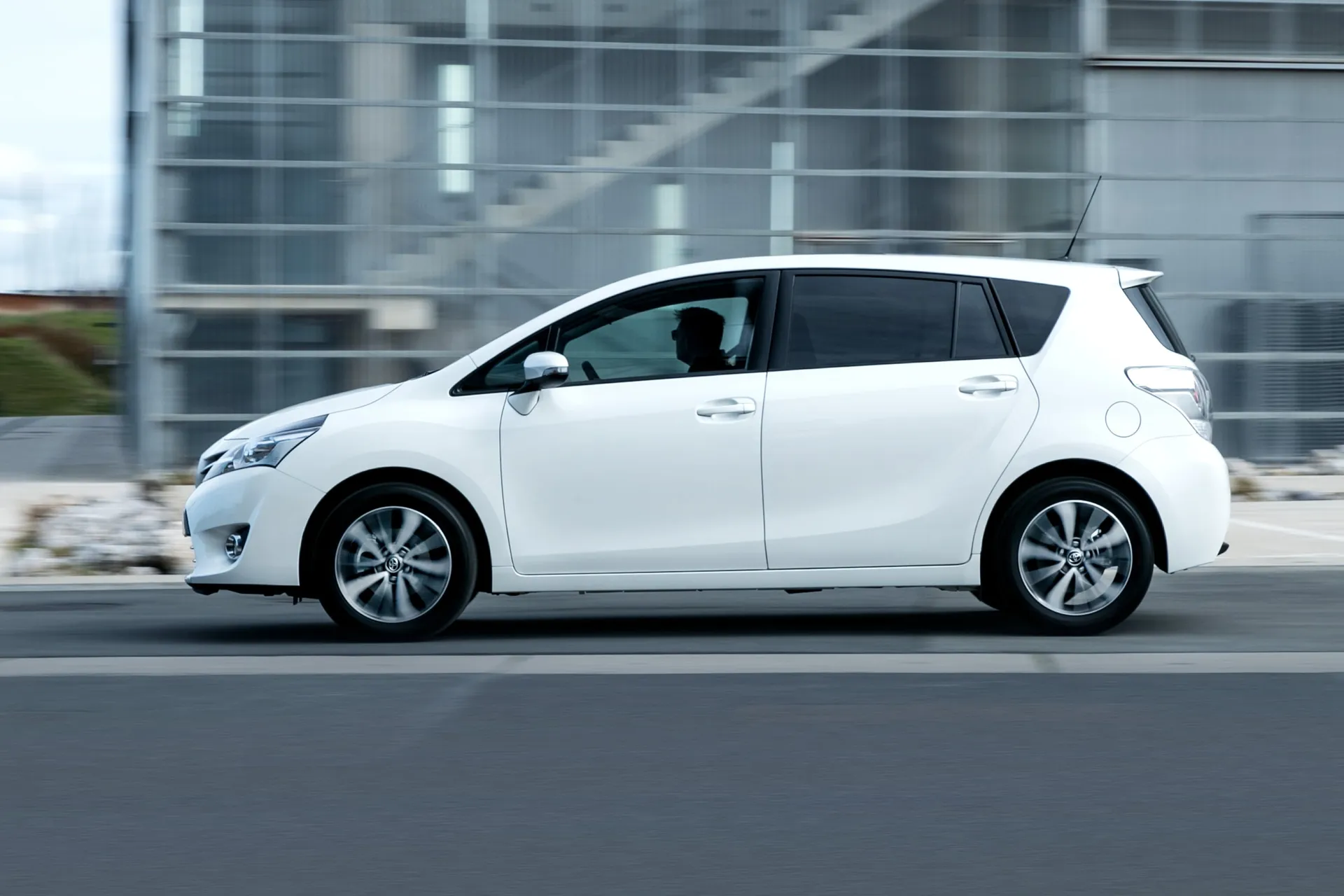
We’d like to tell you that the Toyota Verso is as fun to drive as a Toyota GT86 or Supra. Unfortunately, we’re unable to do that, but that’s not to say that the Verso is entirely lacking in the fun department.
The Verso was designed and built in Europe for European roads, so it’s not totally devoid of engagement. The sharp steering and relatively stiff suspension combine to make this a surprisingly good companion on a country road.
It’s not perfect. The light steering is great in the city, but could do with a little more weight at higher speeds.
The fact that Toyota has favoured ride comfort over precision handling is to be expected – and applauded. It all feels very European in its execution, with a driving experience more akin to a hatchback than an MPV.
Avoid the 17-inch alloy wheels, though, because the 16-inch rims deliver the most comfortable ride.
What engines and gearboxes are available in the Toyota Verso?
Although the Toyota Verso launched with a 2.0-litre D-4D diesel engine, this was replaced by a more efficient BMW-sourced 1.6 D-4D for 2014. It offers the performance and efficiency of the 2.0 unit, but with a significant 20kg weight saving. It’ll saunter to 62mph in 12.7 seconds before hitting a top speed of 115mph.
Alternatively, you can opt for one of two Valvematic petrol engines. The 1.6-litre is mated to a six-speed manual gearbox to deliver 0-62mph time in 11.7 seconds and a top speed of 115mph. It’s the weakest engine, not least because it requires so much work to make swift progress – especially if you’re travelling seven-up.
The 1.8-litre petrol is paired with a CVT automatic transmission to provide a 0-62mph time of 11.1 seconds and a top speed of 115mph. This is one of the better CVT units on the market, with Toyota making it feel like a traditional automatic transmission, without the ‘rubber band’ characteristics common to other units.
That being said, we’d still recommend the 1.6-litre D-4D. Its low- to mid-range pull is most welcome in a car of this type, while the on-paper fuel economy figures are hard to ignore.
Refinement and noise levels
Although Toyota marketed the Verso as a new car, it was actually a heavily reworked version of the Verso dating back to 2009. When viewed in the context of its predecessor, the Verso puts on an impressive display of refinement.
Toyota added extra soundproofing between the engine bay and cabin, along with on the A-pillars. Additional touches like more aerodynamic door mirrors and improved sealing on the door corners contribute to a cabin that feels cocooned from the outside world.
Take it easy and the Verso feels remarkably hushed, which is a boon on the motorway, when the engines settle to a quiet idle. Things go a little awry when you put the engines under stress, though.
The 1.6-litre D-4D diesel sounds coarse and unrefined, the 1.6-litre petrol delivers an unwelcome din, while the CVT transmission in the 1.8-litre version makes it clear that it would rather be taking it easy, thank you.
These are minor complaints, because for the most part, the Toyota Verso feels as refined as some cars wearing a premium badge.
Safety equipment: How safe is the Toyota Verso?
The Toyota Verso was awarded a maximum five-star safety rating in 2010, before being named the safest MPV by Euro NCAP in 2011. Although the reworked version wasn’t tested by Euro NCAP, this is an MPV built with safety in mind.
The scores were impressive: 89 percent for adult occupant protection, 75 percent for adult occupant protection, 69 percent for adult occupant protection, and 86 percent for safety assist technologies. Such a stellar performance is unlikely today, but only because it’s harder to achieve a five-star rating in 2020.
From 2016, the excellent Toyota Safety Sense package was made standard across the Verso range. The pack includes a pre-collision system with forward collision warning and autonomous emergency braking, automatic high beam headlights and lane departure warning.
You’ll also find driver and front passenger airbags, curtain shield airbags for all three rows of seats, a driver’s knee airbag and Isofix child seat anchor points. All models come with a space saver temporary spare wheel, or a tyre repair kit for versions fitted with a panoramic sunroof.
A significant but oft-overlooked benefit of aerodynamics is high-speed ability. While a slippery body shape can improve fuel economy, the improved airflow can also deliver a flatter straight-line ride, improved rear stability and increased composure when cornering at speed.
MPG and fuel costs: What does a Toyota Verso cost to run?
"The 1.6-litre D-4D diesel has the potential to return 62.8mpg on a combined cycle. However, according to the Honest John Real MPG test, you’re likely to see 50mpg in the real world. With this in mind, it might be worth searching for an early 2.0-litre D-4D diesel. Although the official figure is lower (57.6mpg), the ‘real world’ figure is 55.7mpg."
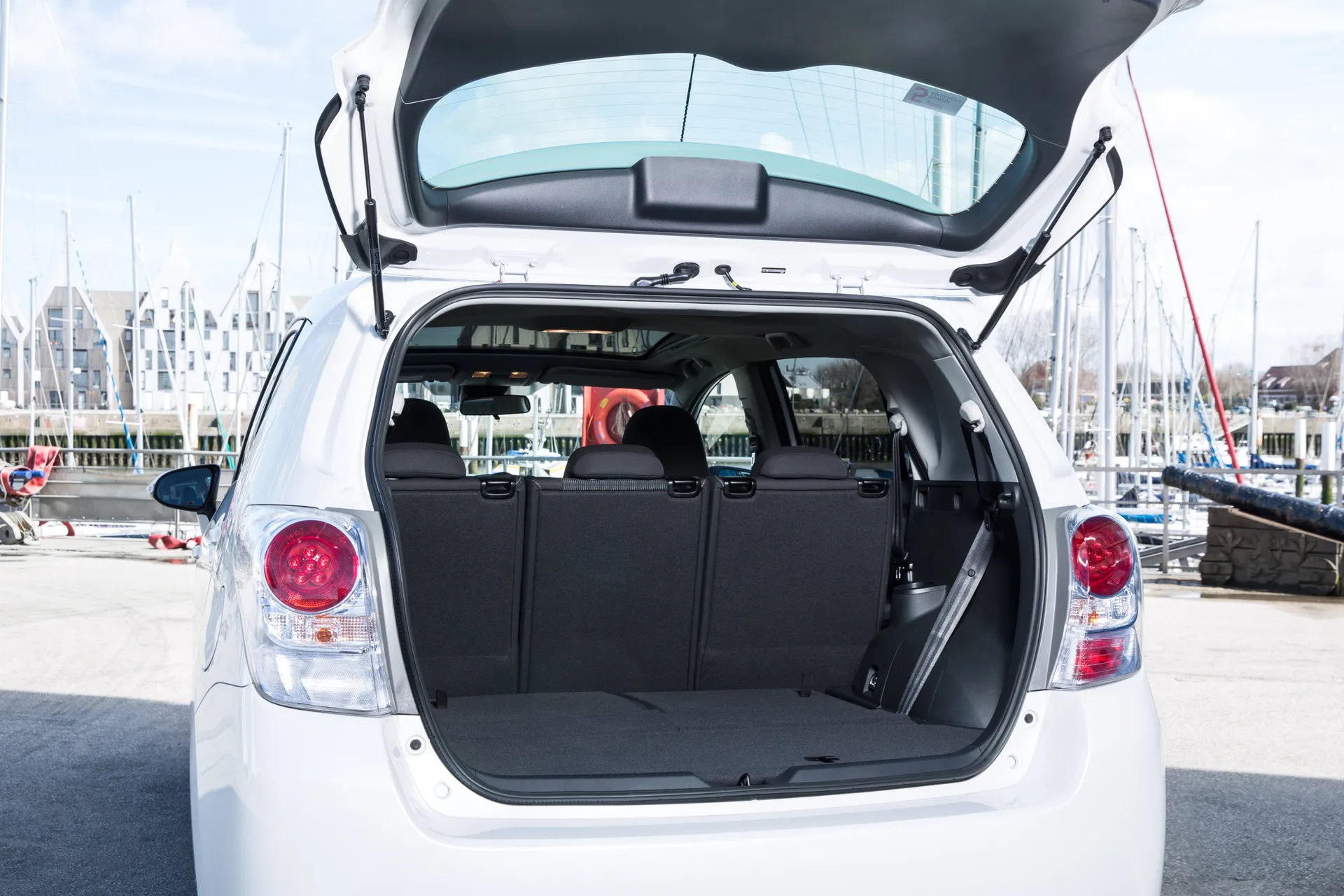
The 1.6-litre D-4D diesel has the potential to return 62.8mpg on a combined cycle. However, according to the Honest John Real MPG test, you’re likely to see 50mpg in the real world. With this in mind, it might be worth searching for an early 2.0-litre D-4D diesel. Although the official figure is lower (57.6mpg), the ‘real world’ figure is 55.7mpg.
You’ll get a similar success rate in the 1.8-litre automatic, with the Real MPG figure of 40.6mpg impressively close to Toyota’s claim of 42.8mpg to 43.5mpg. Finally, the 1.6-litre petrol actually improves on its official figure, with Real MPG recording an average of 43.9mpg – that’s 2.4mpg more than claimed.
How reliable as a Toyota Verso?
What the Toyota Verso lacks in excitement, it makes up for reliability. The 1.6 diesels suffer from timing chain failures but, that aside, the Toyota Verso should be pretty dependable. As always, a full service record is desirable.
Insurance groups and costs
The cost of insurance will be roughly the same, regardless of the trim level or engine you choose. The 1.6-litre Valvematic petrol and 1.6-litre diesel fall into insurance groups 13 and 14, while the 1.8-litre Valvematic is slightly higher, slotting into group 15.
The Verso should be cheaper to insure than the Seat Alhambra (groups 13 to 25), Volkswagen Sharan (groups 15 to 25) and Ford Galaxy (groups 17 to 31). This is a car driven by careful types, you see.
VED car tax: What is the annual road tax on a Toyota Verso?
You’ll enjoy a small but significant cost saving by opting for the 1.6-litre D-4D diesel engine. Because the CO2 emissions are 10g/km lower than the old 2.0-litre D-4D unit, you’ll pay £30 a year for Vehicle Excise Duty (VED, or road tax). This increases to £125 a year in the 2.0-litre diesel.
The 1.6-litre and 1.8-litre Valvematic petrol engines cost £205 a year to tax. Note: these cars are based on Toyota Verso models registered on or before 31 March 2017. A Verso registered on or after 1 April 2017 will cost £150 to tax, regardless of the engine or wheel size.
How much should you be paying for a used Toyota Verso?
"The earliest examples of this particular Toyota Verso are available for around £5,000. This is excellent value for money when you consider the size of the car, the number of seats on offer and Toyota’s reputation for reliability. You can expect a six-figure mileage and a few battle scars, but these cars were bought to serve a purpose."
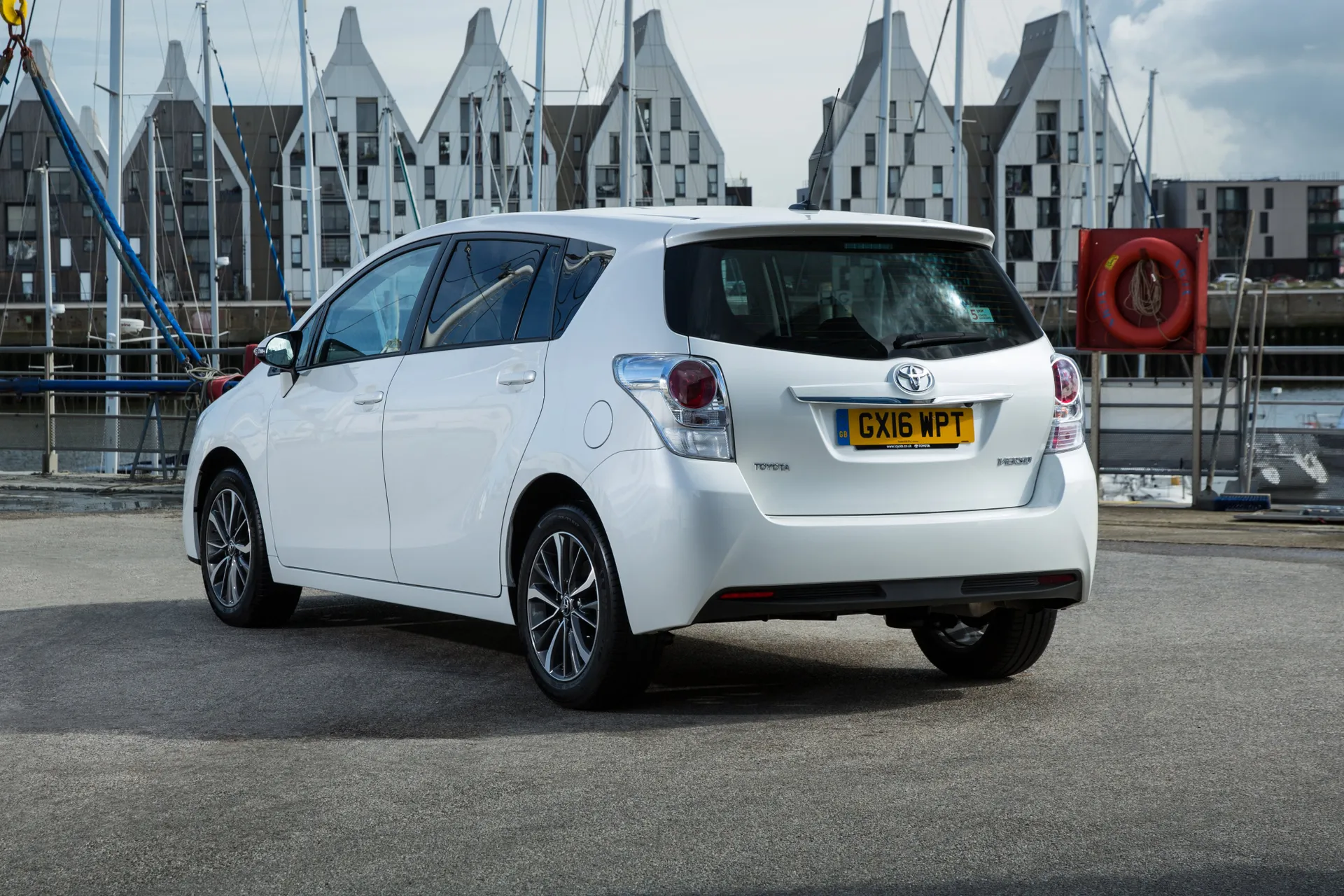
The earliest examples of this particular Toyota Verso are available for around £5,000. This is excellent value for money when you consider the size of the car, the number of seats on offer and Toyota’s reputation for reliability. You can expect a six-figure mileage and a few battle scars, but these cars were bought to serve a purpose.
If you’re after a post-2015 Verso, you’ll need to spend at least £7,000, while post-2017 cars cost upwards of £10,000. The most you’ll need to spend is £18,000 – a price that will secure a 2018 car with around 10,000 miles on the clock.
Remember, all Toyota cars are covered by a five-year/100,000-mile warranty, so buying anything newer than a 2015 Verso should provide some added peace of mind.
Trim levels and standard equipment
The Toyota Verso was launched in 2013 with three trims: Active, Icon and Excel. A Trend version was added for the 2014 model-year, with the Trend Plus arriving in 2015. In 2016, the Trend and Trend Plus were replaced by a single Design trim, which slotted in below the flagship Excel.
In 2017, the range was streamlined to include Active, Icon and Design. It’s worth noting that the base-spec version was a five-seat Active with a 1.6-litre petrol and six-speed manual gearbox. Few of these were ordered in the UK, but you’ll want to avoid the five-seater if you need room for seven.
Although standard equipment is generous across the range, we’d avoid the Toyota Verso Active as it misses out on a few must-have features. When new, the Icon was the range sweet spot, but the flagship Excel and Design make more sense on the used car market. Also look out for the feature-packed Trend and Trend Plus models.
Ask the heycar experts: common questions
Is the Toyota Verso a seven-seater?
Is the Toyota Verso a reliable car?
Is the Toyota Verso a hybrid?
Get our latest advice, news and offers
Keep me updated by email with the latest advice, news and offers from heycar.
By submitting you agree to our privacy policy



